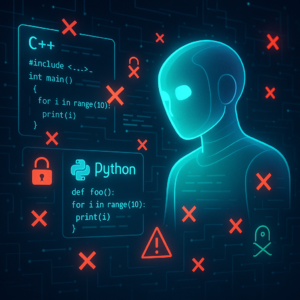Breaking Down Language Barriers: How Large Language Models are Shaping Europe’s Linguistic Future

Breaking Down Language Barriers: How Large Language Models are Shaping Europe’s Linguistic Future
Introduction: Embracing Europe’s Linguistic Diversity
Ever since the unveiling of ChatGPT had us all chatting with machines, Large Language Models (LLMs) have soared in popularity. These impressive AI tools are redefining how we interact with technology by understanding and generating language in astonishing ways. But what about the plethora of European languages—ranging from English and French to Slovak and Estonian—that are interwoven into the continent’s rich tapestry? This blog takes you on a journey to discover how LLMs are being tailored for Europe’s diverse linguistic landscape and the monumental impact these developments promise.
From Rule-Based Systems to Powerful Transformers
A Brief History
Language models weren’t always as smart as GPT-3 or as comprehensive as Google’s PaLM. Initially, they were rule-based, laboriously coded to understand language based on strict grammatical criteria. Next came statistical models, which analyzed text data to predict upcoming words based on previous ones. This worked relatively well but struggled with complexity and larger sentences.
Enter neural networks. These ingenious models translated words into numbers, solving many of the old system’s limitations. They facilitated the transition to pretrained language models like Google’s BERT, which brought significant advancements. Finally, the emergence of transformer architectures like GPT revolutionized how we conceive LLMs today. Transformers are a lot like multitasking prodigies, analyzing loads of data simultaneously and discerning complex structures in language with their unsupervised learning capabilities.
The Power of Large Language Models for European Languages
Why European Languages Matter
Europe stands out with its diverse languages, and each comes with unique quirks and challenges. Most LLMs initially focused on English due to its global status and abundant resources for training, which left many European languages in the dust. Recent efforts, however, are addressing this by customizing models specifically for these languages—high-resource ones like French and German, right down to lesser-serviced languages such as Maltese and Slovak.
The Toolbox: A Variety of Models
Here’s a rundown of various models tailored to European tongues:
Encoder-Only Models
These have an “input only” focus—imagine them like the intake part of a massive meat processor, where the raw language insights get condensed into handy formats. BERT and its siblings like DistilBERT and ELECTRA are some top picks here. Models like CamemBERT for French and RoBERT for Romanian showcase how they can effectively deal with language nuances.
Decoder-Only & Encoder-Decoder Models
The decoder-only type is about churned information, similar to setting the language meat processor in reverse, whereas encoder-decoder models provide a full circle experience, jolting text from a mumbo-jumbo format into pristine readability. GPT-3 for general tasks and mT5 for multilingual prowess highlight the efficacy of these architectures.
Multilingual Masterpieces & MoE Models
LLMs like the multilingual Bloom model and others use specialised architectures dubbed Mixture-of-Experts (MoE), somewhat like having a platoon of language specialists, each expert focusing on its snippet of wisdom, producing well-informed outputs.
Building the Foundation: Pretraining Datasets
High-quality datasets are the lifeblood of any successful LLM. For European languages, researchers have curated extensive corpora, such as the German deWaC and the French OSCAR, to ensure models are trained on diverse and representative text samples. These datasets span news articles, classical literature, and even casual online conversations, offering a rich tapestry for LLM training.
Real-World Applications and Implications
The advancements in LLMs for European languages go beyond academic exercises. They hold significant implications for various sectors:
1. Enhanced Translation Services: Nuanced machine translations can make language barriers practically invisible, fostering cross-cultural communication effortlessly.
2. Improved Customer Support: Multilingual chatbots can handle queries across different languages, ensuring businesses cater to diverse customer bases.
3. Content Creation: Writers and marketers can harness LLMs to generate compelling content in multiple languages, expanding reach and engagement.
4. Educational Tools: Auto-generating educational materials in less commonly taught languages ensures resources are accessible to more students globally.
Key Takeaways
-
LLMs are revolutionizing the ways we interact with the linguistic diversity in Europe. They offer new possibilities in translation, customer service, content creation, and education, among other sectors.
-
Customized models for European languages are crucial, breaking barriers and allowing people to engage with technology in their native tongues.
-
High-quality datasets are the foundation of powerful models, and ongoing efforts are focused on ensuring that these datasets are inclusive of Europe’s wide array of languages.
-
The development of multilingual and specialized models is essential for capturing the nuances of less widely spoken languages. With these advances, languages like Slovak and Maltese will receive equal attention and resources.
-
Stay tuned for more breakthroughs! Keep your eyes peeled for future improvements in LLMs that will open up even more avenues for communication and cultural exchange across Europe.
This is a pivotal time in AI’s role in language, bridging diverse cultures and paving the way for a more interconnected global community. As research advances, who knows what linguistic feats we’ll achieve next? Perhaps, one day, a world where communication knows no borders.
If you are looking to improve your prompting skills and haven’t already, check out our free Advanced Prompt Engineering course.
This blog post is based on the research article “A Survey of Large Language Models for European Languages” by Authors: Wazir Ali, Sampo Pyysalo. You can find the original article here.




